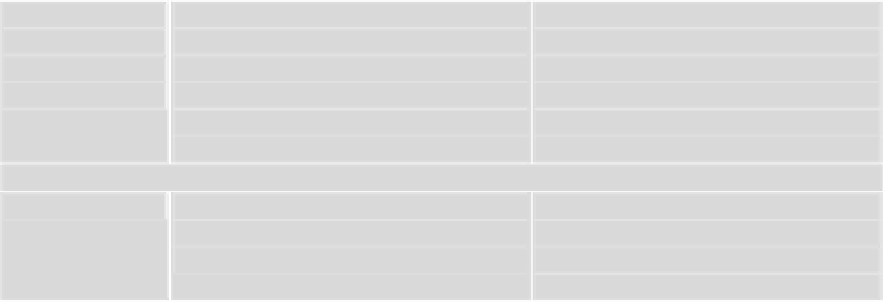Agriculture Reference
In-Depth Information
Characteristics
Non-organic
Organic
Farm
Plant production
and agro-
ecology
High input system (mineral
fertilizer, herbicides, pesticides,
GMO, technology); mono-cropping,
large farms, large field size, low
amount of biotopes; Segregation
between farming and nature
protection
Low input system (limited fertilizer
input, mechanical weed control,
mainly biological pest control); crop
rotation, legumes, biotope rich;
compost, green manure; integration
of nature protection into the
farming system
Animal
husbandry
High performance, large animal
groups, high fodder input
(concentrates), short life span of
animals, antibiotics, hormones
allowed, slurry production,
confinement
Low input, mainly own fodder, low
amount of concentrates, long
animal life span, antibiotics
regulated, hormones excluded,
often stable manure, ethical rules;
pasture and farm yard as run-off,
free-range
Farm economy
and market
orientation;
Industry oriented, controlled by
industry; one market, economy of
scale
Diversified production, investment
into soils and biodiversity, several
markets
Related environment
Agro and food
industry
Global players, uniformed
commodities
Local and regional players, diverse,
partly international
Consumer and
markets;
certification
No contact with the consumers;
mainly big retailers; voluntary
certification systems
Diverse relations towards
consumers and different markets;
certification following specific
guidelines, also linked with
subsidies
Information;
policy
(subsidies);
research
Industry; compatible with official
agricultural policy, sector
(commodity) oriented subsidies;
research mainly by private
companies and private financed
Universities
State and farmer organizations;
partly in line with policies,
environmental friendly oriented
subsidies; farmer driven research,
University research mainly state
financed
Paradigms
Ontology
Short term profit oriented;
maximization of labor and
technological efficiencies
Farm is part of a broader eco- and
socio-cultural system; natural
conditions are accepted and
adjusted
Methodology
Technology and output oriented
Balancing between the different
parts of the farming system,
avoiding losses
Epistemology
Observation, analysis and policy
decisions, technological framework
Observation, diagnosis, and
therapy, prevention and risk
avoidance
Table 3. Characteristics of Different Farm Approaches


























Search WWH ::

Custom Search